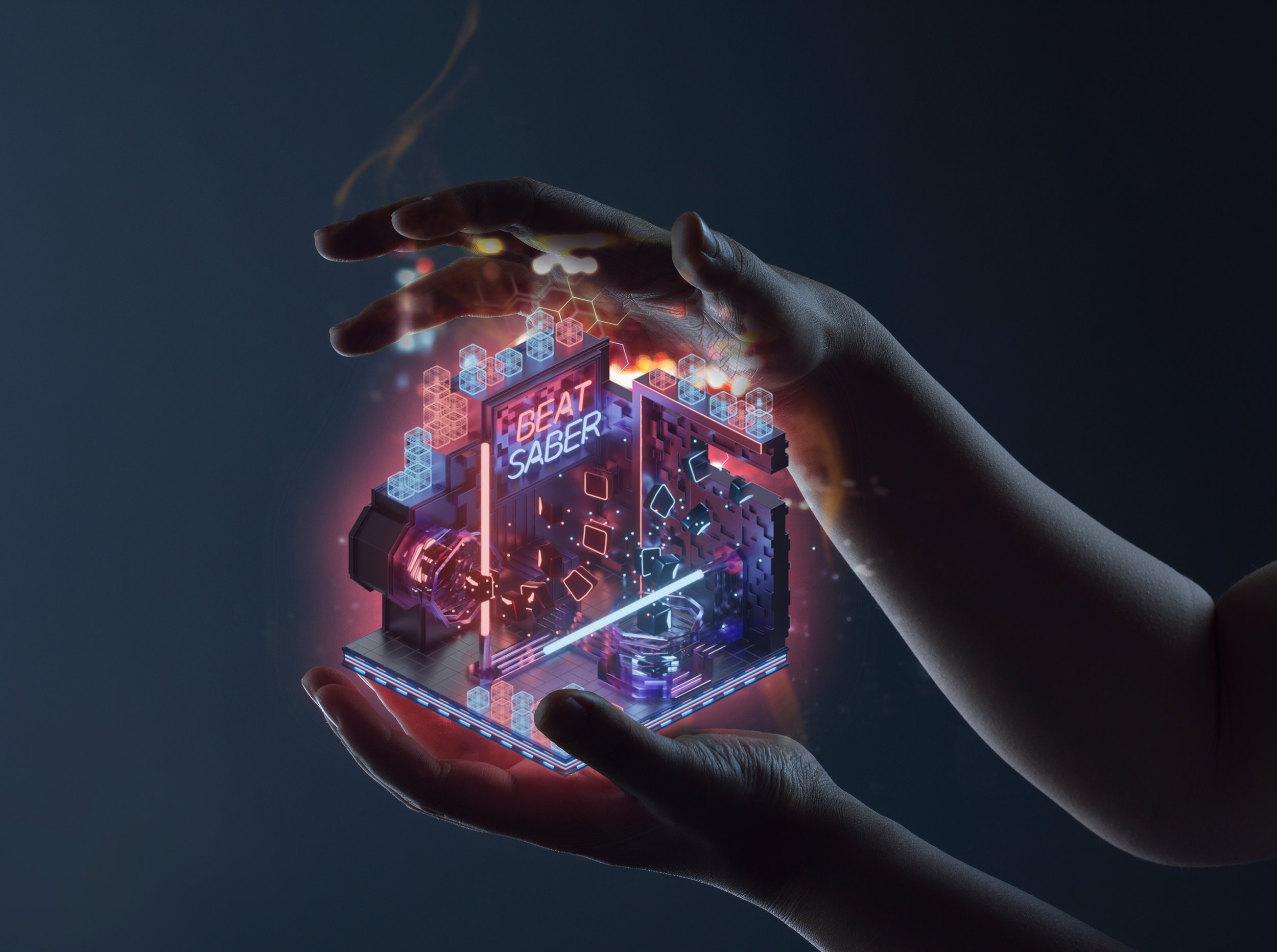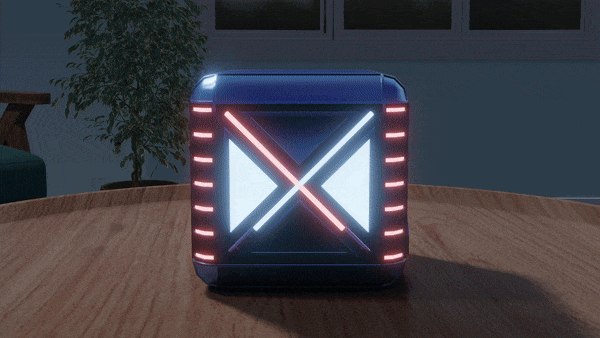
Case Study / Immersive Store Vision, Meta Quest
Meta
Commerce innovation with the surrealistic benefits of virtual reality.
Our main objective: pushing the familiar, effective methods of conversion by leveraging the other-worldly features of VR—and collaborating closely with Meta’s product team to sell the ambitious vision.
Overview
In the fall of 2022, I led an exciting vision project in partnership with Meta Reality Labs to innovate on the Quest Store experience. Collaborating frequently with product managers and designers at Meta, we quickly learned insights that would inform a flexible vision that could scale realistically to meet both near and long-term goals of conversion.
To bring this vision to life, I managed a cross-discipline team of creative directors, UX/UI designers, creative technologists, and 3D motion artists to create an in-headset VR prototype that would showcase a conceptual, yet functional product demo meant to bring more immersion and tangibility to the shopping experience. Partnering with our internal commerce experts, we created a product roadmap outlining key transition states to implement this vision, informing a larger initiative to invest in more immersion across the Quest platform.
By adding more dimensionality to the UI and engaging all of the senses, our concepts signaled a broader push toward reimagining experiences beyond 2D interfaces and familiar conventions of today, laying the groundwork with foundational design principles for next-era devices and consumer experiences.
The foundation
Research led us to a core hypothesis that immersive shopping leads to higher conversion, and from there we developed a vision to illustrate this, underscoring three primary experience principles as the foundation for our concepts:
Tangibility
Tangible objects are inherently more collectible and desireable, and provide more immediate value to the user.Immersion
Moments can be enriched by disrupting the monotony of shopping, and bringing users directly inside of the content.Multi-sensoriality
Appealing to multiple senses—like sight, sound, and touch—can maximize the impact of each moment for users.
The work
Our team collaborated with Meta on a product vision that could meet realistic internal goals. It was important to keep both a long-term, inspiring perspective of the core vision as well as deep consideration for feasibility within the near-term. This ensured the greatest concept viability and chance of success.
At the heart of the vision was adding more dimensionality to the overall shopping experience. With this, we developed a scalable, spatial design system for games and applications in the Meta Quest Store that would drive discovery, inspire immediate interaction, trigger desire and collectibility, and draw interest to go deeper. These “microcosmic worlds” bring titles to life by lifting the shopping experience out of the 2D interface and into the Quest Home environment.
As a near-term strategy, we designed and built an in-headset prototype to showcase this immersive vision. The experience takes users from the Store Landing into an immersive browsing experience that drives deeper into a multi-dimensional PDP purchase flow, coinciding with a realistic roadmap of product change states to enable a total transition.
Microcosmic titles. Volumetric, animated and interactive components to replace static imagery in the Store. Creating a scalable system for future titles to feel more tangible, collectible, and engaging to the senses.
More dimensionality. Parallax layering was implemented to give titles a more tangible feeling in the Store in the near-term.
Immersive details. To transport users into “shopping mode” while maintaining a comfortable, grounded experience, a volumetric floor appeared underfoot and remained throughout their journey in the Store.
Multi-sensory PDPs. While exploring details, users were fully-enveloped in game environments through SFX, 3D objects, and 360 immersive trailers.
The result
At the end of the engagement, Meta adopted the immersive vision into a larger initiative to influence how the Quest Store and adjacent experiences could continue to evolve. Our work served as a north star of possibility that inspired Meta product teams and their leadership to ideate on and validate the need for more immersion.
Project credits and info
My role: Group Creative Director
Collaborators: Micah Ganske, Beto Garcia, Andres Giraldo, Oscar de la Hera Gomez, Jon Hackett, Cavan Huang, Kurt Lorey, Julian Rivas, Eric Vienna
Agency: Huge
Client: Meta
Product Innovation, VR, 3D, Spatial Design, Interaction Design, Immersive Commerce, Experience Vision, Prototyping
Next: SK-II Tokyo 2021 Olympics
As the official beauty partner of the Tokyo 2021 Olympics, we helped SK-II deliver a powerful message on the global stage through a groundbreaking, mixed reality brand experience.













